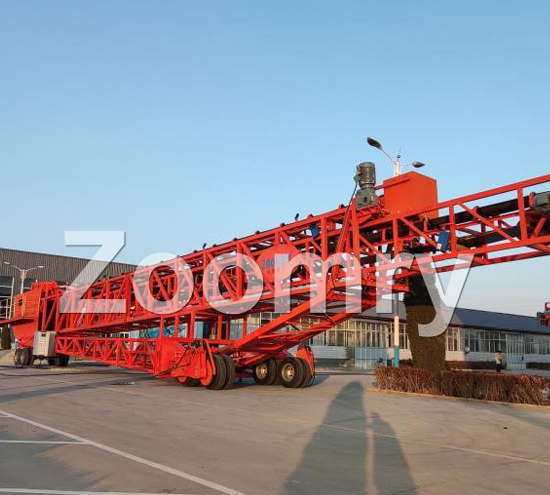Telescopic conveyor systems, also known as extendable conveyors or telescoping conveyors, are innovative material handling solutions that provide flexibility and efficiency in loading and unloading operations. These conveyor systems feature a telescopic mechanism that extends and retracts, allowing them to reach into trailers, containers, or other areas, reducing manual handling and increasing productivity. Here is an overview of telescopic conveyor systems, their components, benefits, and common applications.
Components of Telescopic Conveyor Systems:
- Base Conveyor: The base conveyor forms the foundation of the telescopic conveyor system. It consists of a rigid frame equipped with rollers or a belt that facilitates the movement of goods.
- Telescopic Boom: The telescopic boom is the extendable section of the conveyor system. It can be extended or retracted to reach varying lengths, depending on the requirements of the application.
- Conveyor Belt or Rollers: The telescopic boom is equipped with a conveyor belt or rollers that facilitate the movement of materials along the length of the boom.
- Drive System: The drive system powers the conveyor belt or rollers, allowing for smooth and controlled movement. It can be powered by an electric motor or other suitable mechanisms.
Benefits of Telescopic Conveyor Systems:
- Increased Efficiency: Telescopic conveyors eliminate the need for manual loading and unloading, reducing labor requirements and improving operational efficiency. They enable faster loading and unloading of goods, resulting in reduced turnaround times and increased productivity.
- Versatility: These conveyor systems are highly versatile and can be used in various industries and applications. They can accommodate a wide range of product sizes and types, making them suitable for handling diverse materials, including parcels, bags, boxes, and loose goods.
- Space Optimization: Telescopic conveyors can extend into trailers, containers, or other confined spaces, optimizing the use of available space and maximizing storage capacity. They eliminate the need for additional equipment, such as forklifts or conveyor extensions, saving valuable floor space.
- Flexibility: The extendable nature of telescopic conveyor systems allows them to adapt to different loading or unloading configurations. They can be adjusted to different heights and lengths, providing flexibility to meet specific operational requirements.
- Safety and Ergonomics: By minimizing manual handling, telescopic conveyors reduce the risk of worker injuries, strains, and fatigue associated with heavy lifting and repetitive movements. They provide a safer and more ergonomic working environment for employees.
- Quick Setup and Portability: Telescopic conveyors are often designed to be easily transportable and quick to set up. They can be moved and deployed as needed, allowing for efficient use in different locations or during temporary operations.
Common Applications of Telescopic Conveyor Systems:
- Warehousing and Distribution: Telescopic conveyors are widely used in warehouses and distribution centers for loading and unloading trucks, containers, or trailers. They streamline the material handling process, improving throughput and reducing labor costs.
- E-commerce and Parcel Handling: With the growth of e-commerce, telescopic conveyors play a crucial role in sorting centers and fulfillment operations. They facilitate efficient loading and unloading of parcels, speeding up order fulfillment and improving logistics operations.
- Manufacturing and Assembly Lines: Telescopic conveyors can be integrated into manufacturing and assembly lines to transport materials or components between different stages of production. They enhance efficiency and facilitate smooth material flow.
- Airports and Logistics Hubs: Telescopic conveyors are utilized in airports and logistics hubs for baggage handling and cargo operations. They enable efficient loading and unloading of luggage and packages onto airplanes or cargo containers.

 ZOOMRY
ZOOMRY

